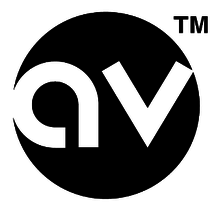Amusement Vision
 | |
Former type | Division (Defunct) |
|---|---|
| Industry | Video games industry |
| Fate | Merged with Sega's Research and Development division |
| Founded | 2000 (2000) |
| Founder | Toshihiro Nagoshi |
| Defunct | July 1, 2004 (July 1, 2004) |
| Headquarters | Tokyo, Japan |
| Products | Super Monkey Ball series, F-Zero GX |
| Parent | Sega |
| Website | www.amusementvision.com/index_eng.html |
Amusement Vision was a division of Japanese video game developer Sega.
Contents
1 History
2 List of games
2.1 Arcade
2.2 Dreamcast
2.3 GameCube
2.4 GameBoy Advance
3 References
4 External links
History
In 2000, all nine of Sega's internal R&D departments were separated from the main company, and established semi-autonomous subsidiaries, with each one electing a president as a studio head.[1] However, for more financial stability, Sega began consolidating its studios into six main ones (Sega Wow, Sega AM2, Hitmaker, Amusement Vision, Smilebit, Sonic Team) in 2003, and merged them back into a uniform R&D structure throughout 2004.
Amusement Vision (AV) was headed by Toshihiro Nagoshi. In addition to an arcade line-up and the Daytona USA remake Daytona USA 2001, AV was most known for its Nintendo partnership on the exclusivety on the original two Super Monkey Ball games, and development collaboration of F-Zero GX. In part of Sega's consolidation of studios, non-sports staff of Smilebit merged with AV in 2003 which resulated into the Ollie King arcade release at first. By 2004, AV had 124 employees and the main focus would be on "epic and film-style titles", which is when development on the Yakuza series began and AV was dissolved and integrated into Sega on July 1, 2004.[2]
List of games
Arcade
Planet Harriers (2000)
SlashOut (2000)
Monkey Ball (2001)
Spikers Battle (2001)
Virtua Striker 3 (2001)
F-Zero AX (2003)
Ollie King (2004)
Dreamcast
Daytona USA 2001 (2000)
GameCube
Super Monkey Ball (2001)
Super Monkey Ball 2 (2002)
Virtua Striker 3 (2002)
F-Zero GX (2003)
GameBoy Advance
Shining Force: Resurrection of the Dark Dragon (2004)
References
^ "Sega Corporation Annual Report 2000" (PDF). www.segasammy.co.jp. Retrieved 2015-05-17..mw-parser-output cite.citation{font-style:inherit}.mw-parser-output .citation q{quotes:"""""""'""'"}.mw-parser-output .citation .cs1-lock-free a{background:url("//upload.wikimedia.org/wikipedia/commons/thumb/6/65/Lock-green.svg/9px-Lock-green.svg.png")no-repeat;background-position:right .1em center}.mw-parser-output .citation .cs1-lock-limited a,.mw-parser-output .citation .cs1-lock-registration a{background:url("//upload.wikimedia.org/wikipedia/commons/thumb/d/d6/Lock-gray-alt-2.svg/9px-Lock-gray-alt-2.svg.png")no-repeat;background-position:right .1em center}.mw-parser-output .citation .cs1-lock-subscription a{background:url("//upload.wikimedia.org/wikipedia/commons/thumb/a/aa/Lock-red-alt-2.svg/9px-Lock-red-alt-2.svg.png")no-repeat;background-position:right .1em center}.mw-parser-output .cs1-subscription,.mw-parser-output .cs1-registration{color:#555}.mw-parser-output .cs1-subscription span,.mw-parser-output .cs1-registration span{border-bottom:1px dotted;cursor:help}.mw-parser-output .cs1-ws-icon a{background:url("//upload.wikimedia.org/wikipedia/commons/thumb/4/4c/Wikisource-logo.svg/12px-Wikisource-logo.svg.png")no-repeat;background-position:right .1em center}.mw-parser-output code.cs1-code{color:inherit;background:inherit;border:inherit;padding:inherit}.mw-parser-output .cs1-hidden-error{display:none;font-size:100%}.mw-parser-output .cs1-visible-error{font-size:100%}.mw-parser-output .cs1-maint{display:none;color:#33aa33;margin-left:0.3em}.mw-parser-output .cs1-subscription,.mw-parser-output .cs1-registration,.mw-parser-output .cs1-format{font-size:95%}.mw-parser-output .cs1-kern-left,.mw-parser-output .cs1-kern-wl-left{padding-left:0.2em}.mw-parser-output .cs1-kern-right,.mw-parser-output .cs1-kern-wl-right{padding-right:0.2em}
^ "Video Games Daily | News: Sega Studio Mergers: Full Details". archive.videogamesdaily.com. Retrieved 2015-05-18.
External links
- Official website